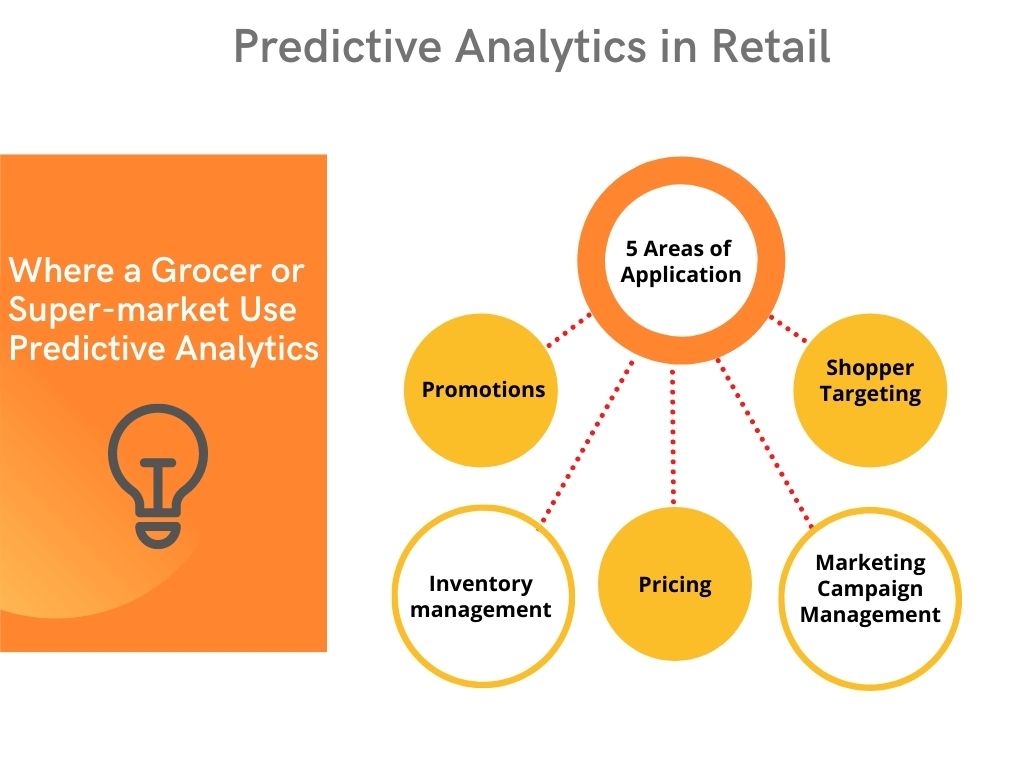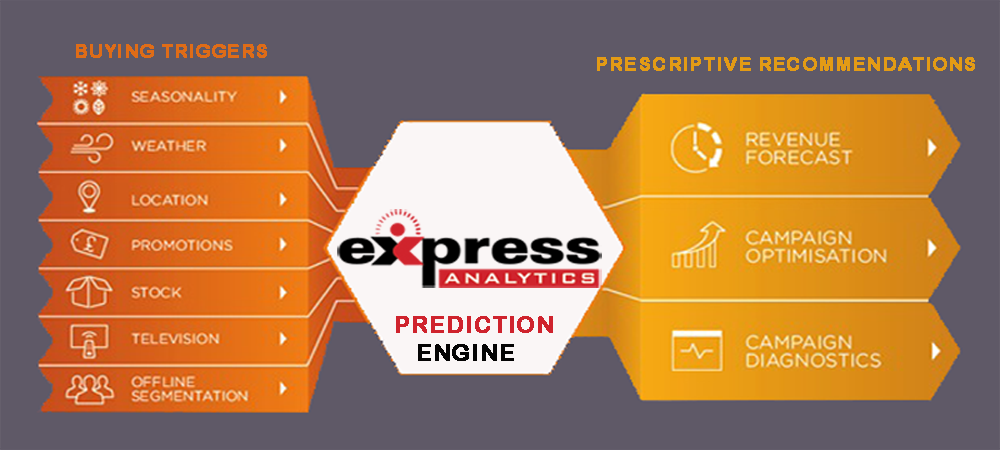Top-5 Uses of Predictive Analytics for Supermarkets and Retail Grocers
Predictive Analytics in Retail, the science of forecasting future trends based on existing data, was once dismissed as simply fancy fortune-telling. Today, it’s making inroads into the retail sector.
Grocery retailers and supermarkets, who generally work on razor-thin profit margins, have started turning to this data-driven science to help them get ahead of the competition. Read more about the top-5 uses of predictive analytics for supermarkets and retail grocers.
Worldwide, the retail grocery sector has become a free-for-all battleground, with eCommerce platforms like Amazon.com entering the fray. Retailers need every available weapon to counter the onslaught, and that includes Predictive Analytics.
Table of Contents
- The use case for Predictive Analytics
- Promotions (including Coupons)
- Shopper Targeting
- Campaign Management
- Pricing
- Inventory Management
5 Use Case for Predictive Analytics
A Transparency Market Research report has forecasted that the overall market for Predictive Analytics software will reach $6.5 billion globally by 2019.
Predictive Analytics is now a key driver of profit. Retailers in the US, for example, are leveraging predictive technology tools to unleash and empower their customer-facing and operational functions.
This form of analytics not only tells the retailer what you did last summer but can predict, with surprising accuracy, what you will be doing this summer.
But where can a business like a grocer or super-market use predictive analytics? We at Express Analytics #ExprAnalytics have found the following five areas of application:
- Promotions
- Shopper Targeting
- Marketing Campaign Management
- Pricing
- Inventory management

The days when a grocer’s marketing needs could be solved with a weekly mass mailer are gone. The customer has moved on from coupon clipping to mobile coupons on their smartphone. Marketing is now a two-way street, the consumer tells you their preferences, location, price sensitivity, and basket sizes, via their smartphones, and browsing behavior.
The marketer has to make sense of this digital stream and respond with near-real-time promotions, targeting, replenishment, and dynamic pricing. It takes two to tango so you better sense where your dance partner is going to be next and what her move is going to be. That needs practice. A database marketing practice, I mean.
Express Analytics puts the voice of the customer at the heart of the business. Data alone does not drive your business. Decisions do. Speak to Our Experts to get a lowdown on how predictive analytics can help your retail business.
The assistance obtained from Predictive Analytics can help players in this segment to integrate it into their marketing and sales operations.
Promotions (including Coupons)
Shoppers give away a lot of information about themselves to retailers, whether they know it or not. This information comes from both their online and offline activities. Every time they download click on a link, cut out a newspaper coupon, or pick up that flyer from the checkout counter, they’re sending out signals to retailers.
Even their method of payment says something about them. Predictive Analytics uses information gathered from all of these points of contact, matches them with the actual purchases, and aids retailers in anticipating the customer’s needs.
The retailer can build well-targeted promotions and loyalty programs, and also helps build a marketing experience curated with products for those customers who have, in the past, demonstrated their inclination to spend.
Thanks to Predictive Analytics, a retail grocer now has an idea of who his true customers are, their spending power, and their behavior, all of which he can align with his promotional campaigns.
Shopper Targeting
We have just seen how Predictive Analytics helps grocers form a better picture of their consumers. But you can also use PA to identify customer demographics.
This can then be used, for example, to create focused, customized offers, targeted specifically at a particular group of shoppers (single or in small groups).
Campaign Management
Marketing campaigns are another area where Predictive Analytics can help. This form of analytics now helps marketers optimize individual campaigns – armed with a specific purpose for a particular segment of the consumers.
The same marketing budget is now suddenly more effective, and fetches better results, thanks to Predictive Analytics and its tools, or helps reduce marketing budgets to a fraction of what they were. Either way, more for less is what it is all about.
Pricing
Predictive Analytics in retail can give considered answers to several questions that are in the minds of the retailers who use pricing to pull in customers:
- What price will maximize sales?
- How often should we have discount sales?
- What is the customer’s ideal price?
- How would competitive pricing affect sales?
Experts say applying Predictive Analytics to pricing can show results in about six months. This leads to about a 5% increase in revenue margins. A grocer can make huge revenue gains this way because he now has the means to “price it just right”.
Inventory Management
Store owners often find themselves plagued by questions of inventory: What should I store, and what should be thrown away? When should I store inventory, and when to discard it? Granted, most retailers have a plan for this, based on metrics like footfalls, sales, and revenue, to name.
It’s a no-brainer to replenish the stock of a product when it starts to run low. But that simply isn’t enough anymore.
Looking to Scale Your Retail Operations using AI?
Predictive Analytics in retail now helps grocers remove the uncertainty factor from Inventory Management. Ask any retailer and they’ll tell you how painful it is to have products that few customers buy. Predictive Analytics in retail accurately predicts demand and suggests better replenishment strategies. It does not end there.
By deploying Predictive Analytics, shop owners can identify where offering up a new product might increase revenue. Inventory imbalances are removed because of Predictive Analytics. The overall result is a decrease in inventory costs and an increase in sales.


No comments yet.